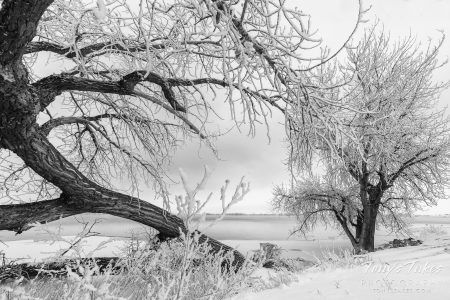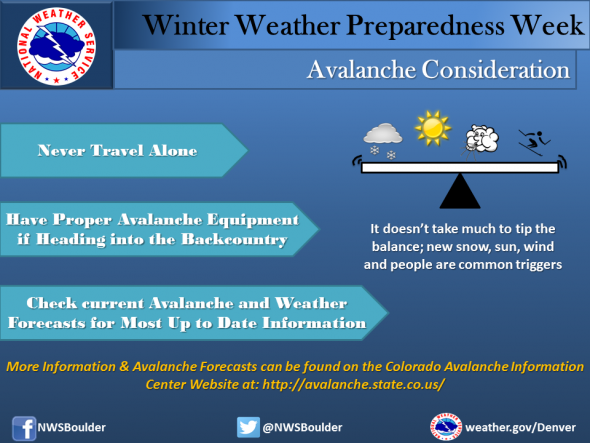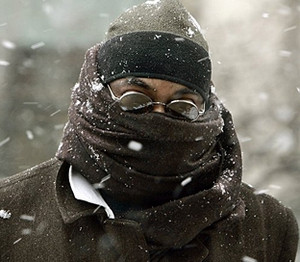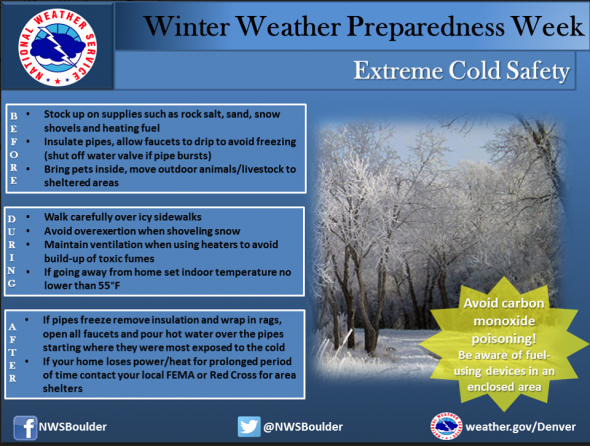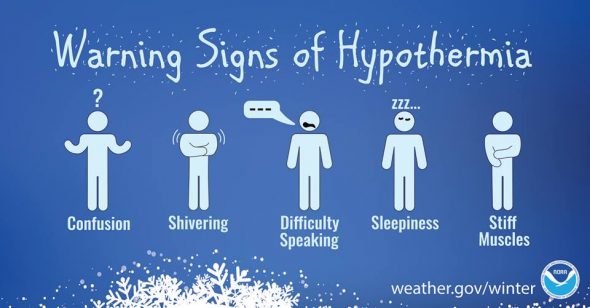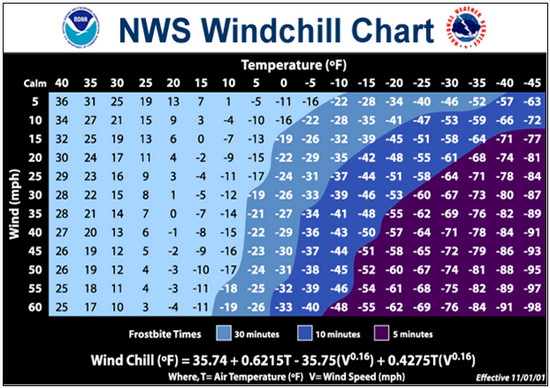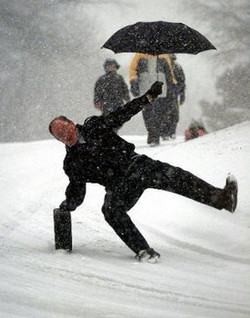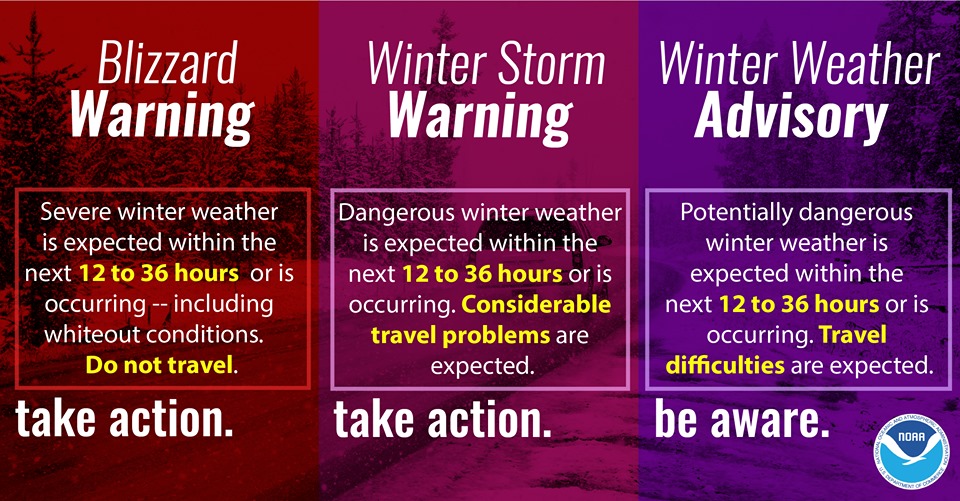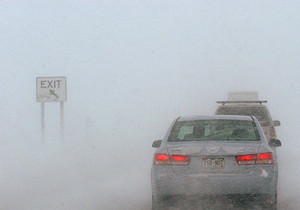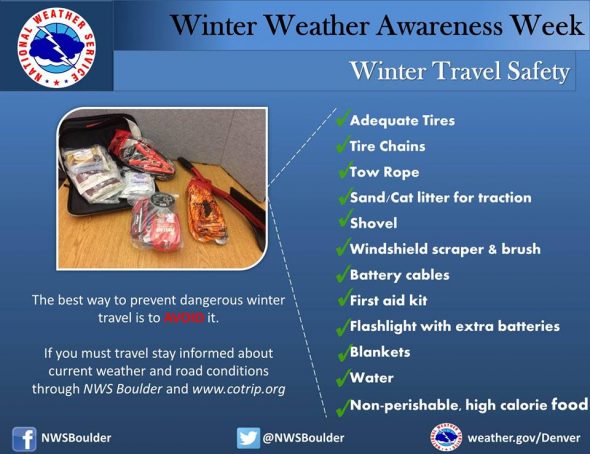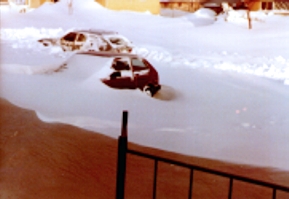It’s not quite Halloween but leading up to the holiday we see plenty of ‘scary’ weather in our look back at this week in Denver weather history. High winds are relatively commonplace and so too are major snowstorms. One recent event in 1997 dumped 14 to 31 inches of the white stuff on the metro area.
From the National Weather Service:
18-23
In 2003…an extended warm spell resulted in 5 new temperature records. The high temperature of 84 degrees on the 18th equaled the record high for the date. High temperatures of 86 degrees on the 19th…83 degrees on the 21st…and 84 degrees on the 22nd were record highs for the dates. Low temperature of 49 degrees on the 23rd was a record high minimum for the date. Low temperatures during the period were in the 40’s and lower 50’s.
19-23
In 1906…heavy snowfall totaled 22.7 inches in the city over the 5 days. Rain changed to snow on the evening of the 19th…and snow continued through the late afternoon of the 23rd. The heaviest amount of snowfall…16.0 inches…fell from 8:00 pm on the 20th to 8:00 pm on the 22nd. The most snow on the ground was 13.3 inches on the evening of the 23rd. This was the first snow of the season and the only snow of the month. Winds during the storm were from the north at sustained speeds of 20 to 30 mph each day. Temperatures during the storm were generally in the 20’s.
22-23
In 1914…post-frontal rain changed to snow. Precipitation totaled 2.72 inches…most of which was in the form of moist snow which melted as it fell in the business section of the city. About 3 inches of snow was measured on lawns in the residential areas on the morning of the 24th. Official snowfall totaled only 0.4 inch downtown… But an estimated 8.0 inches of snow melted as it fell. North to northeast winds were sustained to 29 mph with gusts to 30 mph on both days.
In 1975…a vigorous cold front moving across metro Denver followed by strong northeast winds gusting to 52 mph produced billows of blowing dust and plunged the temperature 21 degrees in an hour. The surface visibility was reduced to 1/4 mile in blowing dust at Stapleton International Airport. The temperature cooled from a daily record high of 81 degrees to a low of 38 degrees by day’s end. The first snowfall of the season totaled 2.7 inches on the 23rd. This was the only measurable snow of the month at Stapleton International Airport.
In 1995…heavy snow fell on the Palmer Ridge south of Denver and in the foothills west of Denver where snow amounts ranged from 4 to 8 inches. Sedalia…south of Denver… Received 8 inches of snow. Winds strengthened on the plains and produced blizzard conditions…reducing surface visibilities to less than 1/4 mile. I-70 was closed from just east of Denver at Gun Club Road to the Kansas border. Ten inches of snow fell at Strasburg east of Denver where north winds at sustained speeds of 35 to 45 mph with gusts as high as 60 mph produced 2 to 4 foot drifts. Snowfall totaled only 2.2 inches at the site of the former Stapleton International Airport. North winds gusted to 51 mph at Denver International Airport.
23
In 1876…skies were fair…but winds were sustained to 48 mph.
In 1942…a major storm dumped 10.2 inches of snow over downtown Denver. Post-frontal northeast winds were sustained to only 13 mph.
In 1955…the first snowfall of the season and the only measurable snow of the month dumped 4.1 inches of snow on Stapleton Airport. This was the single heaviest October snowfall in 13 years since 1942. The storm also brought the first sub-freezing temperatures of the season when the temperature dipped to a low of 25 degrees.
In 1956…southwest winds gusted to 53 mph and produced some blowing dust at Stapleton Airport.
In 1967…a northwest wind gust to 51 mph was recorded at Stapleton International Airport. In downtown Boulder… Winds were sustained at 20 mph with gusts in excess of 40 mph.
In 1981…strong winds occurred in the foothills. Wind gusts to 70 mph were reported at Wondervu.
23-24
In 1887…the first measurable snowfall of the season totaled 3.1 inches. North winds to 20 mph were recorded on the 23rd. This was the only measurable snow of the month.
In 1932…post-frontal snowfall from the late evening of the 23rd continued through the late afternoon of the 24th and totaled 6.2 inches. Southeast winds were sustained to 25 mph with gusts to 26 mph on the 23rd. Temperatures cooled from a high of 68 degrees on the 23rd to a low of 25 degrees on the 24th…the coldest reading of the month that year. Many trees that had not shed their leaves became heavily laden by the wet snow. Many branches were broken… And a few trees toppled under the weight of the snow. The landscape became one of rare beauty.
23-25
In 2021…after several weeks of warm…windy and dry weather that fueled the two largest wildfires in the state`s history; a powerful storm system brought welcome relief as it produced heavy snow and frigid temperatures Denver and the Front Range. In the Front Range mountains and foothills… storm totals ranged from 10 to 20 inches. Along the urban corridor…storm totals from 4 to 12 inches were observed… with the heaviest amounts along and generally west of I-25 and over Weld County…where localized bands of heavy snow Some storm totals included 14.3 inches near Allenspark; and 12.9 inches in southeast Boulder and Nederland…with 12.8 inches near Loveland. At Denver International Airport…4.0 inches of snowfall was observed.
24
In 1956…southwest winds gusted to 56 mph and produced some blowing dust at Stapleton Airport. A cold front produced a thunderstorm with 1/8 inch hail. Rain later changed to snow. Precipitation totaled only 0.11 inch and snowfall only 0.3 inch.
In 1973…strong winds raked the eastern foothills…causing damage in Boulder and Jefferson counties. The heaviest damage occurred in the Boulder area where 20 to 25 mobile homes were hit…some power and telephone lines were blown down…and a store was damaged. A wind gust to 76 mph was recorded in Boulder at the National Bureau of Standards. Northwest winds gusted to 46 mph at Stapleton International Airport.
24-25
In 1921…rainfall totaled 0.35 inch overnight behind an apparent cold front. North winds were sustained to 40 mph with gusts to 46 mph on the 25th. Temperatures plunged from a high of 73 degrees on the 24th to a low of 39 degrees on the 25th.
In 1923…rain overnight changed to snow during the morning. The heavy snowfall accumulated to 12.0 inches before ending on the morning of the 25th. Post-frontal north winds were sustained to 22 mph with gusts to 23 mph on the 24th.
In 1997…one of the worst and deadliest blizzards of the decade developed over eastern Colorado as deep east to northeast flow associated with a vigorous upper level low pressure system over the Four Corners…combined with a strong arctic air mass over the central great plains. Snowfall totals across metro Denver ranged from 14 to 31 inches. The heaviest snowfall occurred in the foothills west and southwest of Denver where 2 to 4 feet of snow were measured. Sustained winds to 40 mph with gusts as high as 60 mph produced zero visibilities and extremely cold wind chill temperatures from 25 below to 40 below zero. Winds whipped the snow into drifts 4 to 10 feet deep. Several major and interstate highways were closed as travel became impossible. Red Cross shelters were set up for hundreds of travelers who became stranded when they had to abandon their vehicles. Four people died in northeastern Colorado as a result of the blizzard. None of the deaths were in metro Denver. At Denver International Airport…4 thousand travelers were stranded when the airport was forced to shut down. At least 120 cars were abandoned along Pena Blvd….the only arterial leading into and out of dia. The blizzard cost air carriers at least 20 million dollars. Thousands of cattle died in the storm over northeastern Colorado…resulting in losses totaling 1.5 million dollars. Some of the more impressive snowfall totals included: 51 inches at Coal Creek Canyon; 48 inches at Silver Spruce Ranch…near Ward; 42 inches at Intercanyon…in the foothills southwest of Denver; 37 inches at Sedalia; 35 inches at Aspen Springs and Conifer in the foothills west of Denver; 31 inches at Eldorado Springs… Southeast Aurora…and Englewood; and 30 inches on Table Mesa in Boulder. Snowfall totaled 21.9 inches at the site of the former Stapleton International Airport…setting a new 24-hour snowfall record of 19.1 inches for the month. Snowfall totaled only 14 inches at Denver International Airport where north winds gusted to 39 mph on the 24th. High temperature of only 21 degrees on the 25th equaled the record low maximum for the date first set in 1873. Low temperature of only 3 degrees on the 26th set a new record minimum for the date. Continue reading October 23 to October 29: This Week in Denver Weather History


